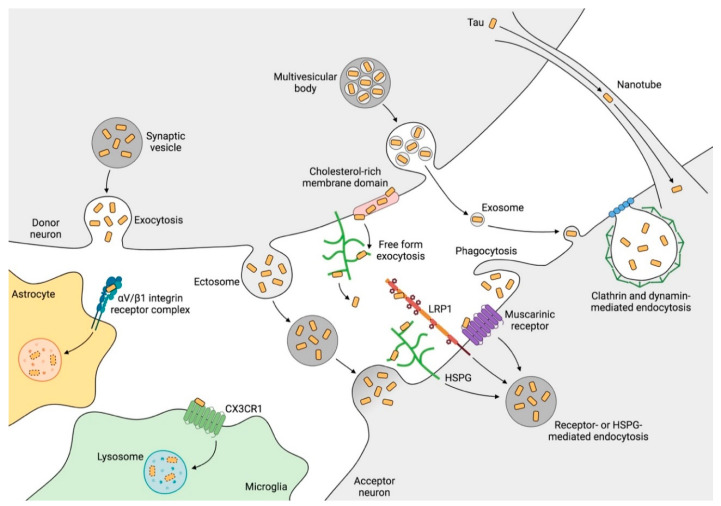Figure 1.
Tau transmission mechanisms. The processes depicted above occur commonly at synapses, where tau can be released to the extracellular space through synaptic vesicles or by direct translocation. Tau is then internalized through receptor- or heparan sulfate proteoglycan (HSPG)-mediated endocytosis, clathrin- and dynamin-mediated endocytosis, and phagocytosis. In addition, tau can be spread through extracellular vesicles (ectosomes and exosomes) that fuse to the membrane of the recipient cell. Moreover, nanotubes establish intercellular communication that serves as a bridge for tau propagation. Microglia and astrocytes also have the ability to internalize and degrade the tau present in the extracellular medium, although the mechanisms involved, especially in astrocytes, remain poorly understood. CX3CR1: fractalkine receptor, HSPG: heparan sulfate proteoglycan, LRP1: low-density lipoprotein receptor-related protein 1. Created with BioRender.com.

